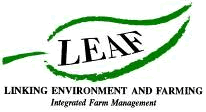
Open your ears
We farm Great Wollaston – a 98 hectare mixed family farm situated on the edge of the Shropshire Hills on the English/Welsh border. We have been hosting visits to the farm for many years and are very keen to open up the whole farm experience to many different groups.
Exploring the farm using noses, ears and hands is a great way to bring the farm to life for everyone, including those who can’t easily get around or have sensory impairments. Hearing the sounds of the cows, the farm machinery, the birds and so on really helps you experience the farm in a different way. It is a simple but also very powerful way of helping engage visitors with what is happening around them.
Hands on connection
While I welcome the group and introduce myself, the farm, and what we do here I use a selection of ‘props’ to make a stronger connection with what I am talking about. I have a variety of things for them to touch and smell depending on what is happening on the farm such as bark, leaves, grain, hay or straw, vegetables or soil.
I can use other objects to make the connection with nature while I explain about what we grow and how nature plays a really important part in helping to keep crops healthy. There’s all sorts of things that I’ve found, feathers, animal bones and skulls, a bird’s nest, or even an owl pellet that help to get across how rich the nature on our farm is.
We use a really simple activity that needs very little equipment or preparation time. Sound maps encourage our visitors to focus on what is happening in their surroundings rather than what they are doing. I begin by explaining that we are going to explore the farm in a totally new way, without really moving about.
Taking time
I give each person a pencil, board – thick cardboard works fine – to lean on and a piece of paper. Then everyone draws themselves in the middle of the picture, it doesn’t have to be realistic, just a stick figure or a smiley face, or even just the word ‘me’ will do! I then encourage them to sit still for a few minutes and just listen to the sounds of the farm. They can take themselves off to different spaces if they like or the whole group can explore the same environment. Each person then marks on their sound map the sounds they can hear and where the sound is coming from. People mark their maps in different ways, drawings, patterns, symbols or words – usually it’s a combination of all of these.
Taking time to just stop and listen is something that we so rarely do. Sometime it can be a bit strange to begin with but people really enjoy the opportunity. The first time I did it I had a very different experience to my day-to-day experience of my farm. It made me realise how much is happening around me as I work.
We talk about how many sounds everyone heard, which was their favourite sound and why, and whether people all heard the same sounds – birds, a tractor, the wind, wheat fields, leaves, cows, sheep, combine harvester, insects etc. How do these different sounds make them feel? Were there sounds they didn’t recognise? Were the sounds natural or man-made? People love to compare their maps.
This activity can really be done anywhere and your visitors could do it again when they get home. It would be interesting to compare the sound map from my farm with the sound map from their home, or garden. You can spend as long as you like making a sound map. It would be great to map the sounds over the course of a day on my farm – if only I had the time!

